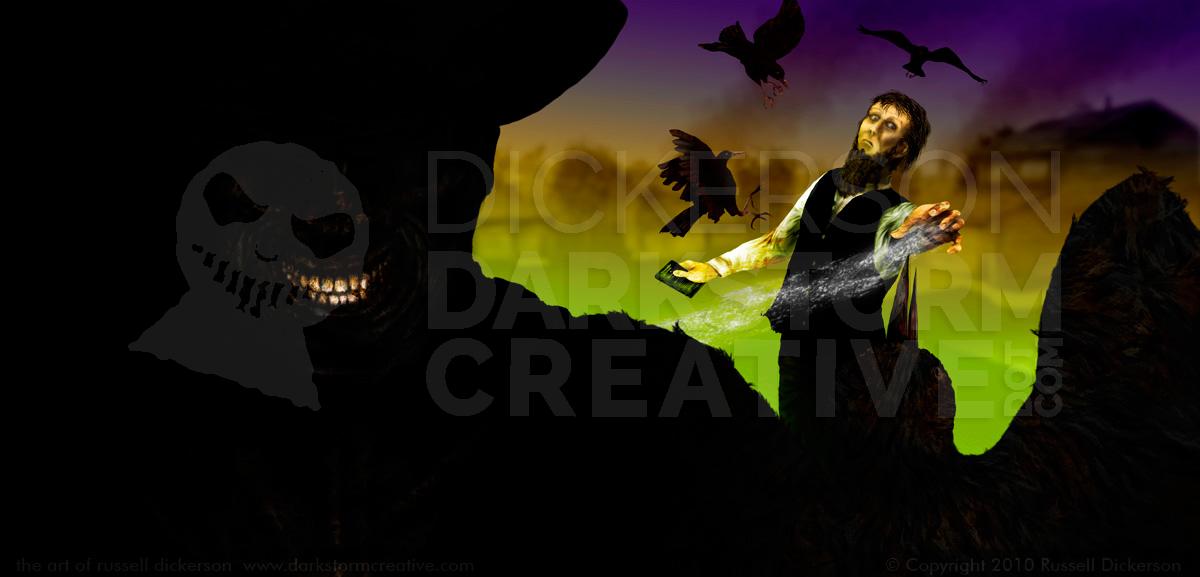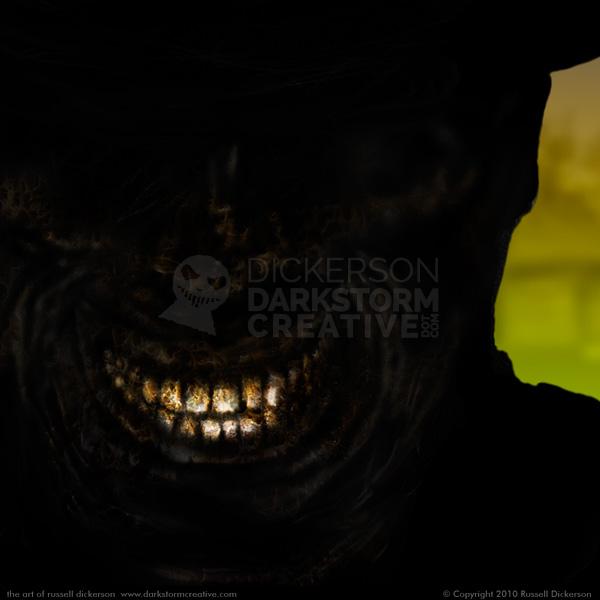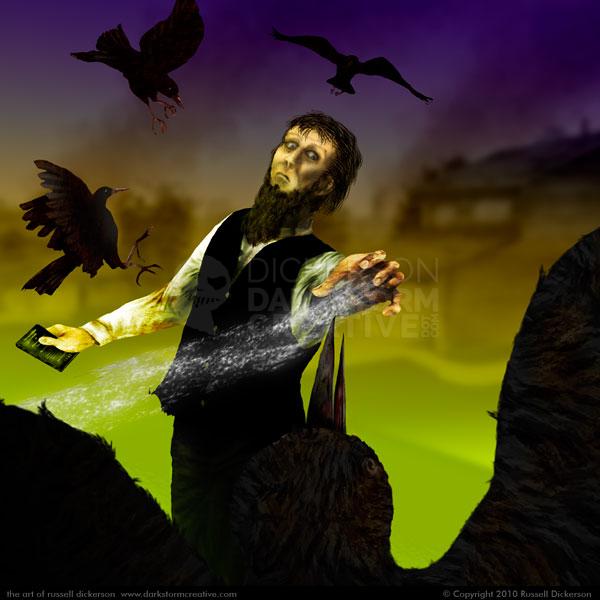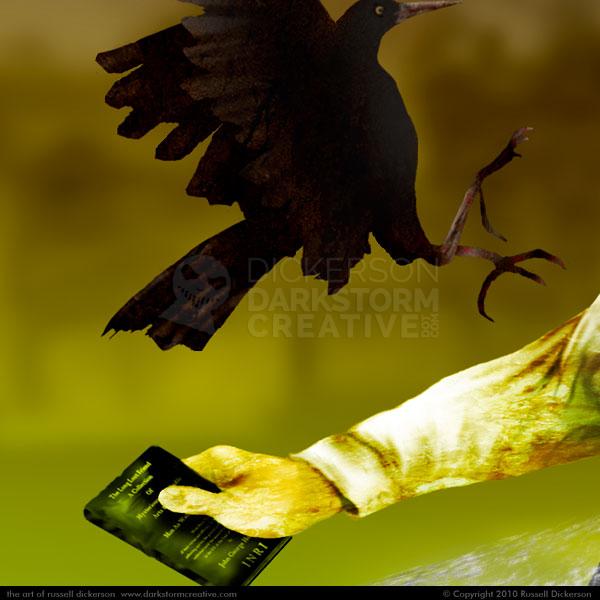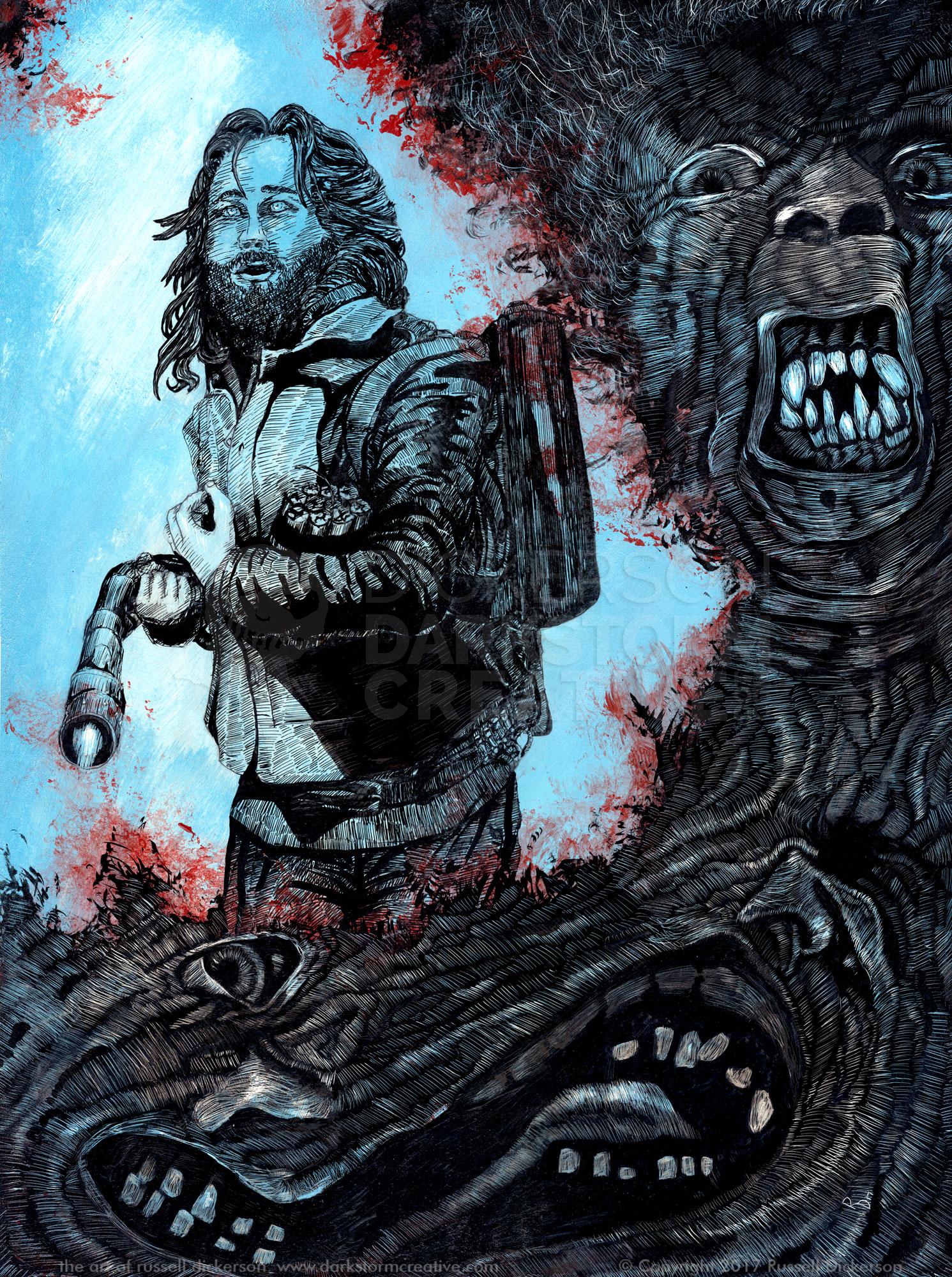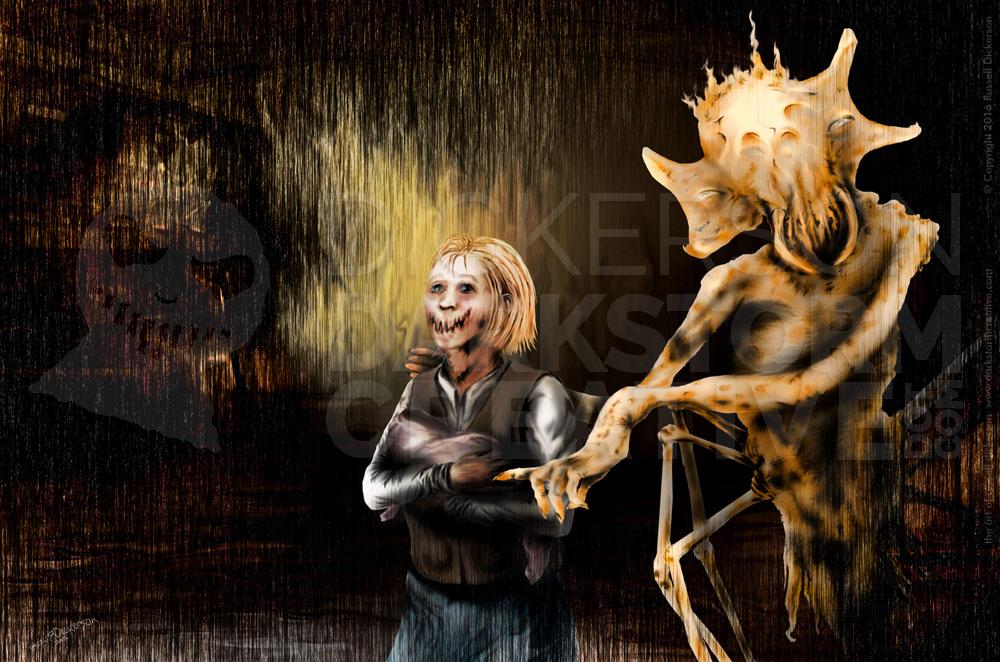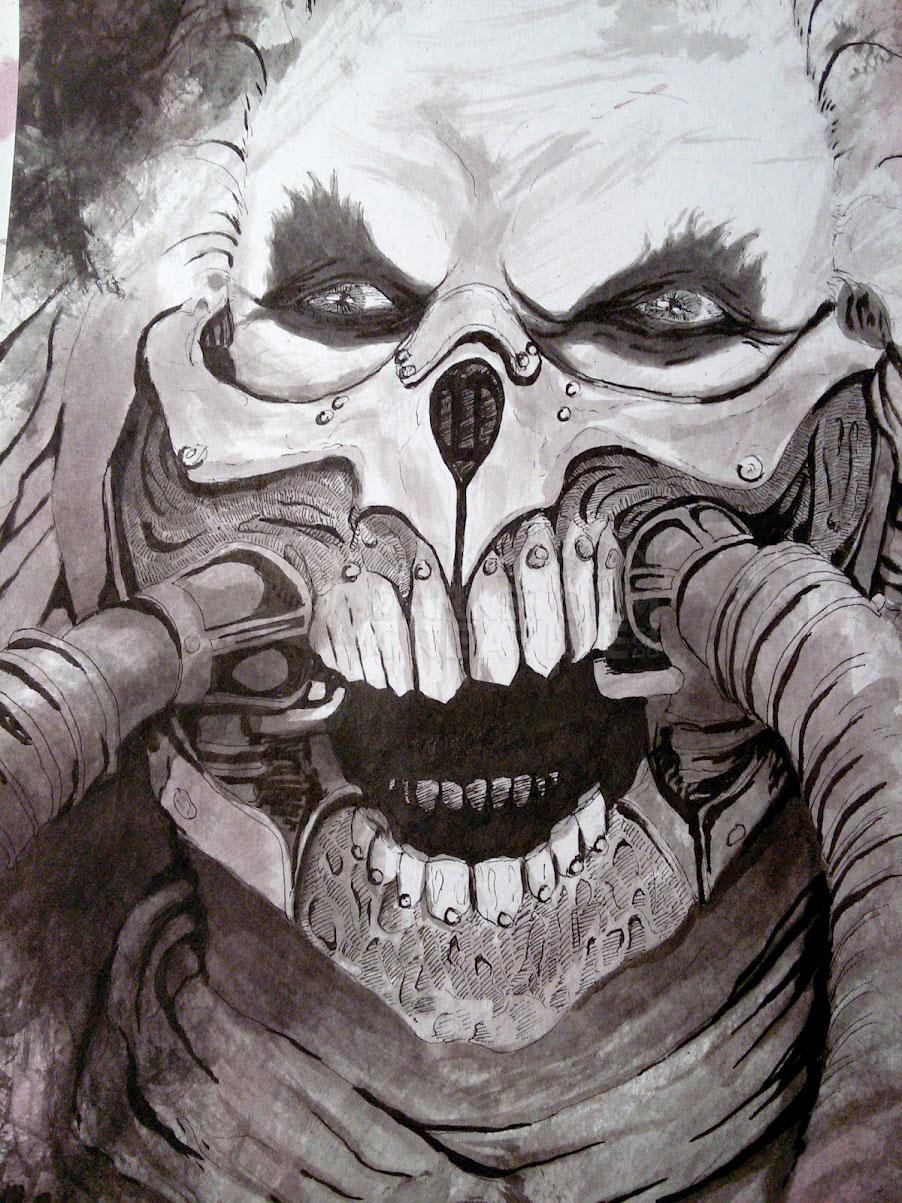First off, below is the second of my covers for the Maelstrom imprint of Thunderstorm Books, this one a cover for author Brian Keene’s A Gathering of Crows (click the image for the larger version):
Now, before I get any further, I just have to say that working with Brian, and on Brian’s fantastic stories, is one of the great experiences of my small art career. He’s such a visual writer that an artist could spend months just kicking out new art pieces based on his work. I also have to say that, as with Kelli Owen’s cover that I highlighted yesterday, it’s been wonderful working with Paul Goblirsch and Thunderstorm Books.
This cover is a bit unlike Kelli’s, and many that I’ve done, in that the story was already available to the public. Another publisher (who has since, apparently, turned to the dark side) released the mass market paperback of A Gathering of Crows at least a month or two before this art was even started.
As the artist coming up with the cover, that put me in an interesting spot. The fans already know the story, they know what will happen, so whatever I create as the cover is going to have to stand up to quite a few comments from those who love the story and know all about it.
So I had to spend a bit more time mulling it over, to get the real feel for it all. So, instead of jumping right in, I grabbed the three books of Brian’s that had anything at all to do with it and read them. I started with Dark Hollow, moved next to Ghost Walk, and finally read Crows.
As a side note, I would have read them anyway, Keene is one of my personally favorite authors. But being in a position where I have to read is a perk of being an illustrator.
Reading all of them, even though only the one was the job, was something that I felt was important. When I do a cover piece, it’s not just a piece of art to slap on a book and off we go. It’s a piece of art that has to mean something, that has to capture the essence of a story and boil it down to a few elements. It’s never easy, but I feel that it’s important to try to get right.
By reading all three, I don’t just get a snapshot of the events in the main story. I get a view of the entire history (so far), to see where the characters have come from, what they’ve dealt with, and how they might react to this new threat.
The best example of that is the main character in the latter two books, Levi (Dark Hollow sets up some of Ghost Walk, but doesn’t have Levi), a fascinating character. I very favorably compare him to another of my favorite characters, Special Agent Pendergast from the books by Douglas Preston and Lincoln Child.
But I don’t believe that the character has been painted before, so I had the task of creating the very first (maybe, Keene can confirm or deny that) image of this character. Without the background, without the other stories, I could have easily failed to get the character, the background art, or even the villains wrong, and I certainly hope that I have “done right by them”.
On to the art itself.
In creating the cover, one thing that Keene describes in the story are the villains. I won’t be spoiling it, but near the beginning one of the characters sees only a vicious smile in the dark, so I created the back cover to have that. I didn’t want just a simple smile though. I wanted one that was malevolent, with no humor in it at all. I wanted it gross really, a textured, almost cruel mouth, with only the hint of the face around it.
The smiling villain is designed to flow, in the silhouette, right into the large foreground crow attacking Levi. I thought it might be a fun effect, and, though it can be seen as one full piece of art, can easily live on its own as a front cover and back cover independently.You can hopefully see that in the full version at the top.
I also spent a bit of time trying to get Levi and the crows right. Aside from how he’s described in the story, which I wanted to get right, there’s also a certain feel to the character. He’s intelligent, mysterious, and even arrogant. But he’s also human, and the trick was to show everything about the character as closely as I could.
In the image, if I did it right, Levi is confident, and yet in some ways afraid. Levi has fought and beaten dark creatures before, and yet he’s never been up against something like this. There’s a strength and a worry to try and capture, and everything from the look on his face to his posture has to tell the viewer everything they need to know. He’s trying his knowledge, his magic, believing in it. Yet, there’s also a question in his face, “is it enough?”
One thing I thought about with the mass market cover was how the crows were. Sure, there are five crows (those who read it will know where–or who– the fifth one really is in my cover) on the paperback. But that’s not what’s in the story. These are violent, evil creatures that attack without thought of recourse. They attack as powerfully as possible, as cruelly as the can, and I wanted that to show in the piece. Levi is literally surrounded and overwhelmed, and the hope is that the thought enters the viewer’s mind that maybe our hero isn’t going to make it.
Now, the title of this article mentions “obsessions”, and I won’t let you down. First, if you look at the background behind Levi, there’s a neighborhood in that green gloom. I spent a fair amount of time putting trees in there, making sidewalks, putting panes in the windows, marking cracks on the street, knowing full well that I was just going to blur it anyway.
Why, you ask? Am I simply an idiot? Before you answer that (too late!), here’s my thinking.
For one, I know it’s there. Or, in many cases, I know it’s not there. So when I’m creating an image, I’m not thinking that I can just paint someone and throw in some background around them. I want to know that there really is a background in there. I want to know that this is another world, that I’ve created something that’s never existed, and I want to populate it with my reality. To cut short on the details, just because someone may or may not see it, is simply cheating.
The other reason is the human eye. The eye picks up on things even when we aren’t really aware of it. To add that extra detail, even if it’s tiny and insignificant, tells the brain in a subtle way that there’s something else here. That this object, or this sky, or this person, has some reality to them. Even in an obviously illustrated piece like this one, the viewer allows themselves to get pulled into it if the details trick the brain.
Take for instance the object in Levi’s right hand. Leaving it black, it could have been just about anything. But with a little work, and a knowledge of the story and the mythos of Keene’s worlds, instead it becomes significant:
Those who have read the story will understand, even without really being able to read it, what those words mean. They will also know what it means to the story, and how important this book really is and also how important those words have been for three books now.
Is it something the general public would get? Probably not. For the fans though, it’s an added bonus, and hopefully gives them a little smile that they themselves have knowledge now.
Those little additions, be it an object like the book or even just the texture on the crow’s leg above the book, add something else to the image. It hopefully gets people to remember it when they are reading, and, if they remember it or give that little smile, then I’ve created a great cover.
I could never ask for more than that.
